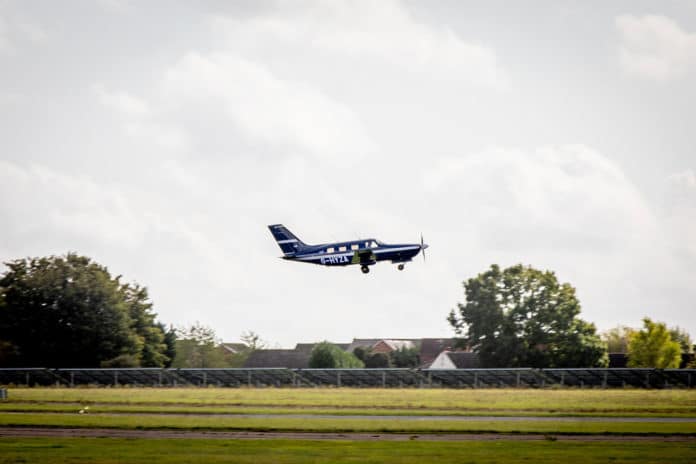Currently, in the automotive industry, the main focus of development efforts is on all-electric systems. But there are also projects for hybrid hydrogen-electric aircraft.
While Airbus unveiled three concepts of zero-emission airliner powered by hydrogen at the start of last week, an American startup made the talk a few days later. ZeroAvia, the leading innovator in decarbonizing commercial aviation, has completed the world’s first hydrogen fuel cell-powered flight of a commercial-grade aircraft.
The flight took place at the company’s R&D facility in Cranfield, England, with the Piper M-class six-seat plane completing taxi, takeoff, a full pattern circuit, and landing.
The developers claim that it is currently the largest hydrogen-powered aircraft for flight. The device uses electric motors for the movement in them, but they receive energy from fuel cells, which combine hydrogen from tanks and oxygen from the environment to produce electricity. This offers the same zero-emission potential as an electric battery but with a higher energy density, making it viable for commercial operations, the company said.
The pilot was able to successfully take off, complete the flight on a given trajectory, and land the plane back on the runway without incident. By the end of the year, the company plans to conduct a long-distance flight in the Scottish Orkney Islands. It is assumed that the plane will cover about 250-mile (400 km). The demonstration of this range is roughly equivalent to busy major routes such as Los Angeles to San Francisco or London to Edinburgh.
“It’s hard to put into words what this means to our team, but also for everybody interested in zero-emission flight. While some experimental aircraft have flown using hydrogen fuel cells as a power source, the size of this commercially available aircraft shows that paying passengers could be boarding a truly zero-emission flight very soon,” said Val Miftakhov, CEO, ZeroAvia. “All of the team at ZeroAvia and at our partner companies can be proud of their work getting us to this point, and I want to also thank our investors and the UK Government for their support.“
ZeroAvia’s innovation program in the UK is part-funded through the UK Government’s Aerospace Technology Institute (ATI) Programme. Through the HyFlyer project, ZeroAvia is working with key partners the European Marine Energy Centre (EMEC) and Intelligent Energy to decarbonize medium-range small passenger aircraft by demonstrating powertrain technology to replace conventional engines in propeller aircraft.
